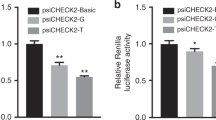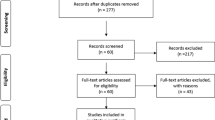Abstract
There is evidence suggesting that genetic variants of Nodal signaling may be associated with risk of congenital heart diseases (CHDs), in which several polymorphisms, such as Nodal rs1904589, have been considered to be implicated in the accumulation of the genetic burden of CHD risk with interacting genes. We hypothesized that genetic variants of GDF1, a protein that heterodimerizes with Nodal, may be related to increased CHD susceptibility. In this study, four tagSNPs of GDF1 were genotyped in 310 non-syndromic CHD patients and 320 healthy controls by using PCR-based DHPLC and RFLP. The results showed no statistically significant differences in genotype and allele frequencies between CHDs and controls with any of the analyzed variants of GDF1. However, a weak statistical association existed between GDF1 rs4808870 and conotruncal defects (CTDs) (uncorrected P = 0.027). Further stratified analysis for subtype revealed the SNP AA genotype and A allele have statistical significance in pulmonary atresia (PA) (corrected P = 1.01 × 10−3 and 0.015, respectively), especially in pulmonary atresia with intact ventricular septum (PA + IVS) (corrected P = 1.67 × 10−3 and 0.034, respectively). Furthermore, two haplotypes, TGGT and CAGT, were found to be significantly associated with increased CHD susceptibility (corrected P = 3.20 × 10−3 and 2.73 × 10−7, respectively). In summary, our results provide evidence that genetic variations of the Nodal-like factor, GDF1 may be associated with CHD risk, and these variations contribute at least in part to the development of some subtypes of CTD in the Chinese Han population.

Similar content being viewed by others
References
Hoffman JI, Kaplan S (2002) The incidence of congenital heart disease. J Am Coll Cardiol 39:1890–1900
van der Bom T, Zomer AC, Zwinderman AH, Meijboom FJ, Bouma BJ, Mulder BJ (2011) The changing epidemiology of congenital heart disease. Nat Rev Cardiol 8:50–60
Srivastava D (2006) Making or breaking the heart: from lineage determination to morphogenesis. Cell 126:1037–1048
Olson EN (2006) Gene regulatory networks in the evolution and development of the heart. Science 313:1922–1927
Bisgrove BW, Essner JJ, Yost HJ (2000) Multiple pathways in the midline regulate concordant brain, heart and gut left–right asymmetry. Development 127:3567–3579
Branford WW, Essner JJ, Yost HJ (2000) Regulation of gut and heart left–right asymmetry by context-dependent interactions between xenopus lefty and BMP4 signaling. Dev Biol 223:291–306
Whitman M, Mercola M (2001) TGF-beta superfamily signaling and left–right asymmetry. Sci STKE 2001(64):re1
Hanafusa H, Masuyama N, Kusakabe M, Shibuya H, Nishida E (2000) The TGF-beta family member derrière is involved in regulation of the establishment of left–right asymmetry. EMBO Rep 1:32–39
Kathiriya IS, Srivastava D (2000) Left–right asymmetry and cardiac looping: implications for cardiac development and congenital heart disease. Am J Med Genet 97:271–279
Arthur HM, Bamforth SD (2011) TGFβ signaling and congenital heart disease: insights from mouse studies. Birth Defects Res A Clin Mol Teratol 91:423–434
Schier AF (2009) Nodal morphogens. Cold Spring Harb Perspect Biol 1:a003459
Schier AF, Shen MM (2000) Nodal signalling in vertebrate development. Nature 403:385–389
Shen MM (2007) Nodal signaling: developmental roles and regulation. Development 134:1023–1034
Baker K, Holtzman NG, Burdine RD (2008) Direct and indirect roles for Nodal signaling in two axis conversions during asymmetric morphogenesis of the zebrafish heart. Proc Natl Acad Sci U S A 105:13924–13929
Goldmuntz E, Bamford R, Karkera JD, dela Cruz J, Roessler E, Muenke M (2002) CFC1 mutations in patients with transposition of the great arteries and double-outlet right ventricle. Am J Hum Genet 70:776–780
Roessler E, Ouspenskaia MV, Karkera JD, Vélez JI, Kantipong A, Lacbawan F, Bowers P, Belmont JW, Towbin JA, Goldmuntz E, Feldman B, Muenke M (2008) Reduced NODAL signaling strength via mutation of several pathway members including FOXH1 is linked to human heart defects and holoprosencephaly. Am J Hum Genet 83:18–29
Lopes Floro K, Artap ST, Preis JI, Fatkin D, Chapman G, Furtado MB, Harvey RP, Hamada H, Sparrow DB, Dunwoodie SL (2011) Loss of Cited2 causes congenital heart disease by perturbing left–right patterning of the body axis. Hum Mol Genet 20:1097–1110
Hyatt BA, Yost HJ (1998) The left–right coordinator: the role of Vg1 in organizing left–right axis formation. Cell 93:37–46
Rankin CT, Bunton T, Lawler AM, Lee SJ (2000) Regulation of left–right patterning in mice by growth/differentiation factor-1. Nat Genet 24:262–265
Andersson O, Reissmann E, Jörnvall H, Ibáñez CF (2006) Synergistic interaction between Gdf1 and Nodal during anterior axis development. Dev Biol 293:370–381
Tanaka C, Sakuma R, Nakamura T, Hamada H, Saijoh Y (2007) Long-range action of Nodal requires interaction with GDF1. Genes Dev 21:3272–3782
Karkera JD, Lee JS, Roessler E, Banerjee-Basu S, Ouspenskaia MV, Mez J, Goldmuntz E, Bowers P, Towbin J, Belmont JW, Baxevanis AD, Schier AF, Muenke M (2007) Loss-of-function mutations in growth differentiation factor-1 (GDF1) are associated with congenital heart defects in humans. Am J Hum Genet 81:987–994
Kaasinen E, Aittomäki K, Eronen M, Vahteristo P, Karhu A, Mecklin JP, Kajantie E, Aaltonen LA, Lehtonen R (2010) Recessively inherited right atrial isomerism caused by mutations in growth/differentiation factor 1 (GDF1). Hum Mol Genet 19:2747–2753
De Luca A, Sarkozy A, Ferese R, Consoli F, Lepri F, Dentici ML, Vergara P, De Zorzi A, Versacci P, Digilio MC, Marino B, Dallapiccola B (2010) New mutations in ZFPM2/FOG2 gene in tetralogy of Fallot and double outlet right ventricle. Clin Genet 80:184–190
De Luca A, Sarkozy A, Consoli F, Ferese R, Guida V, Dentici ML, Mingarelli R, Bellacchio E, Tuo G, Limongelli G, Digilio MC, Marino B, Dallapiccola B (2010) Familial transposition of the great arteries caused by multiple mutations in laterality genes. Heart 96:673–677
Roessler E, Pei W, Ouspenskaia MV, Karkera JD, Veléz JI, Banerjee-Basu S, Gibney G, Lupo PJ, Mitchell LE, Towbin JA, Bowers P, Belmont JW, Goldmuntz E, Baxevanis AD, Feldman B, Muenke M (2009) Cumulative ligand activity of NODAL mutations and modifiers are linked to human heart defects and holoprosencephaly. Mol Genet Metab 98:225–234
Johns M, Paulus-Thomas J (1989) Purification of human genomic DNA from whole venous blood using proteinase K treatment followed by phenol–chloroform extraction. Annal Bio chem 180:276–278
Gross E, Arnold N, Goette J, Schwarz-Boeger U, Kiechle M (1999) A comparison of BRCA1 mutation analysis by direct sequencing, SSCP and DHPLC. Hum Genet 105:72–78
Benjamini Y, Drai D, Elmer G, Kafkafi N, Golani I (2001) Controlling the false discovery rate in behavior genetics research. Behav Brain Res 125:279–284
Shi YY, He L (2005) SHEsis, a powerful software platform for analyses of linkage disequilibrium, haplotype construction, and genetic association at polymorphism loci. Cell Res 15:97–98
Joziasse IC, van de Smagt JJ, Smith K, Bakkers J, Sieswerda GJ, Mulder BJ, Doevendans PA (2008) Genes in congenital heart disease: atrioventricular valve formation. Basic Res Cardiol 103:216–227
Chiquet BT, Lidral AC, Stal S, Mulliken JB, Moreno LM, Arcos-Burgos M, Valencia-Ramirez C, Blanton SH, Hecht JT (2007) CRISPLD2: a novel NSCLP candidate gene. Hum Mol Genet 16:2241–2248
Waldo KL, Kumiski DH, Wallis KT, Stadt HA, Hutson MR, Platt DH, Kirby ML (2001) Conotruncal myocardium arises from a secondary heart field. Development 128:3179–3188
Ward C, Stadt H, Hutson M, Kirby ML (2005) Ablation of the secondary heart field leads to tetralogy of Fallot and pulmonary atresia. Dev Biol 284:72–83
Leong FT, Freeman LJ, Keavney BD (2009) Fresh fields and pathways new: recent genetic insights into cardiac malformation. Heart 95:442–447
Stoller JZ, Epstein JA (2005) Cardiac neural crest. Semin Cell Dev Biol 16:704–715
Nowotschin S, Liao J, Gage PJ, Epstein JA, Campione M, Morrow BE (2006) Tbx1 affects asymmetric cardiac morphogenesis by regulating Pitx2 in the secondary heart field. Development 133:1565–1573
Mohapatra B, Casey B, Li H, Ho-Dawson T, Smith L, Fernbach SD, Molinari L, Niesh SR, Jefferies JL, Craigen WJ, Towbin JA, Belmont JW, Ware SM (2009) Identification and functional characterization of NODAL rare variants in heterotaxy and isolated cardiovascular malformations. Hum Mol Gene 18:861–871
Gruber PJ, Epstein JA (2004) Development gone awry: congenital heart disease. Circ Res 94:273–283
Bentham J, Bhattacharya S (2008) Genetic mechanisms controlling cardiovascular development. Ann N Y Acad Sci 1123:10–19
Stevens KN, Hakonarson H, Kim CE, Doevendans PA, Koeleman BP, Mital S, Raue J, Glessner JT, Coles JG, Moreno V, Granger A, Gruber SB, Gruber PJ (2010) Common variation in ISL1 confers genetic susceptibility for human congenital heart disease. PLoS ONE 26:e10855
Lozano-Velasco E, Chinchilla A, Martínez-Fernández S, Hernández-Torres F, Navarro F, Lyons GE, Franco D, Aránega AE (2011) Pitx2c modulates cardiac-specific transcription factors networks in differentiating cardiomyocytes from murine embryonic stem cells. Cells Tissues Organs 194:349–362
Snarr BS, O’Neal JL, Chintalapudi MR, Wirrig EE, Phelps AL, Kubalak SW, Wessels A (2007) Isl1 expression at the venous pole identifies a novel role for the second heart field in cardiac development. Circ Res 101:971–974
He MA, Zhang X, Wang J, Cheng L, Zhou L, Zeng H, Wang F, Chen Y, Xu Z, Wei Q, Hu FB, Wu T (2008) Genetic variation in heat shock protein 60 gene and coronary heart disease in China: tagging-SNP haplotype analysis in a case-control study. Cell Stress Chaperones 13:231–238
Acknowledgments
We express our appreciation to the original DNA donors who made this study possible.
Conflict of interest
The authors state that they have no conflict of interest.
Author information
Authors and Affiliations
Corresponding author
Additional information
Xiaowei Sun and Ying Meng contributed equally to this work.
Electronic supplementary material
Below is the link to the electronic supplementary material.
Rights and permissions
About this article
Cite this article
Sun, X., Meng, Y., You, T. et al. Association of growth/differentiation factor 1 gene polymorphisms with the risk of congenital heart disease in the Chinese Han population. Mol Biol Rep 40, 1291–1299 (2013). https://doi.org/10.1007/s11033-012-2172-0
Received:
Accepted:
Published:
Issue Date:
DOI: https://doi.org/10.1007/s11033-012-2172-0




